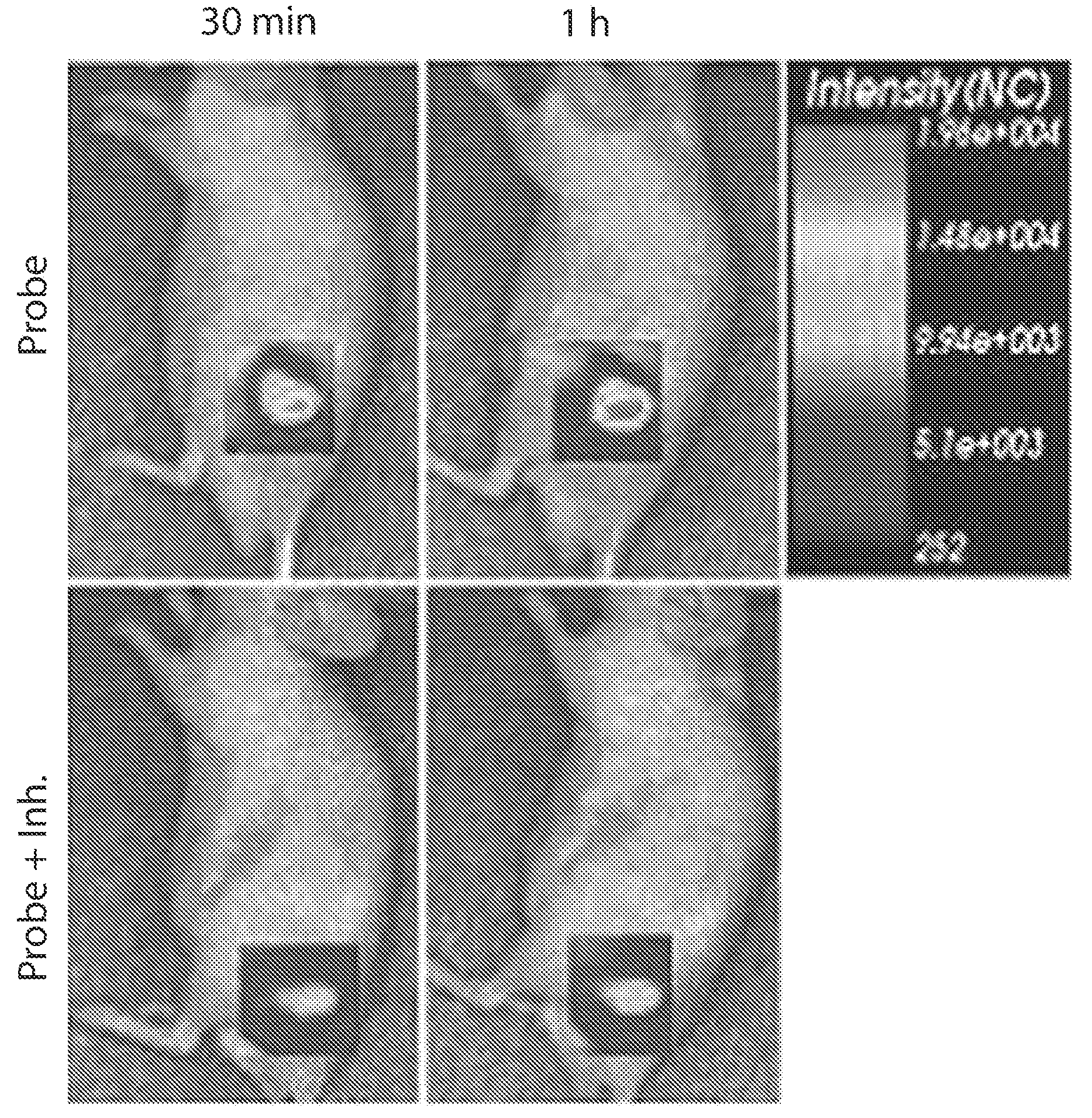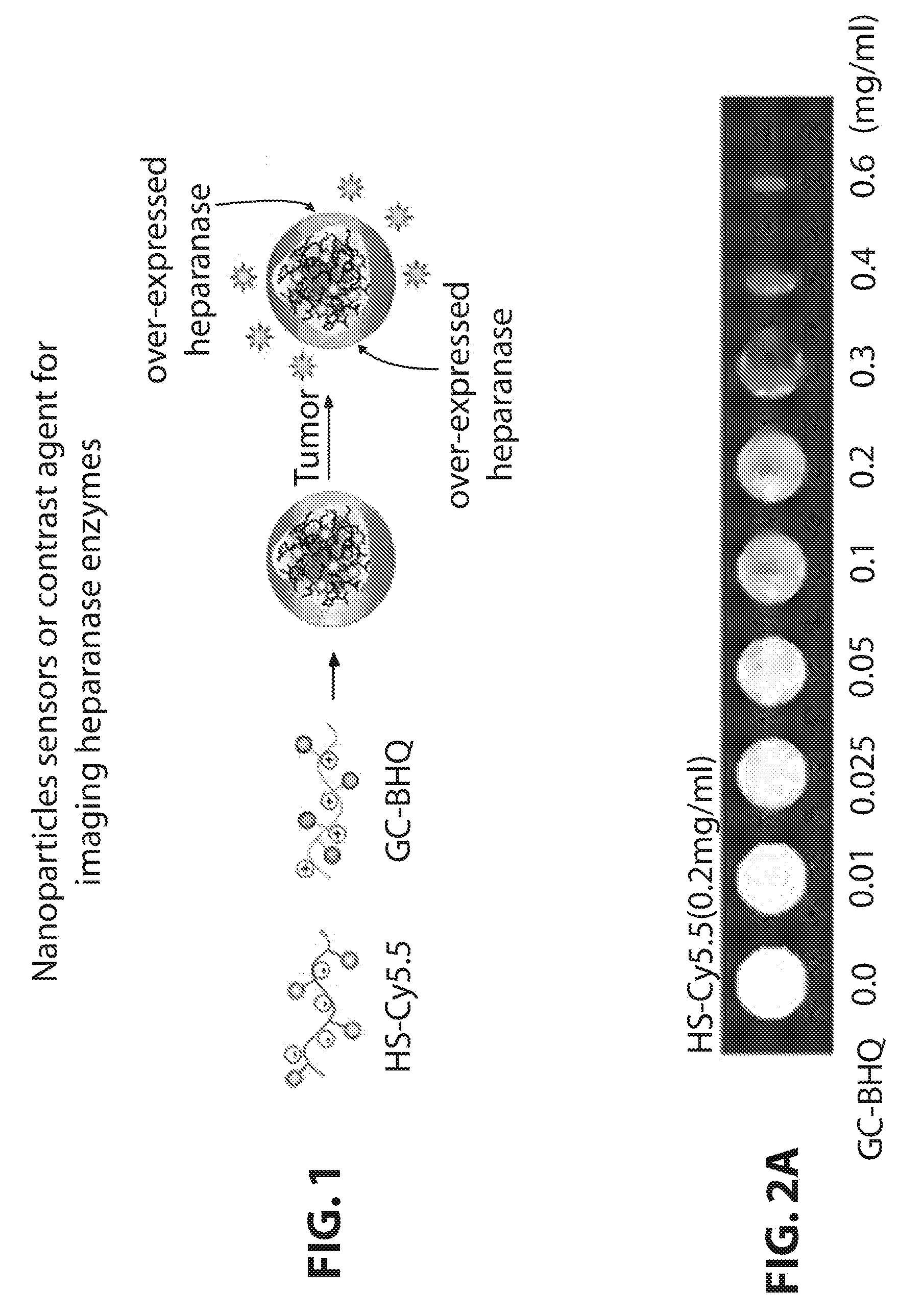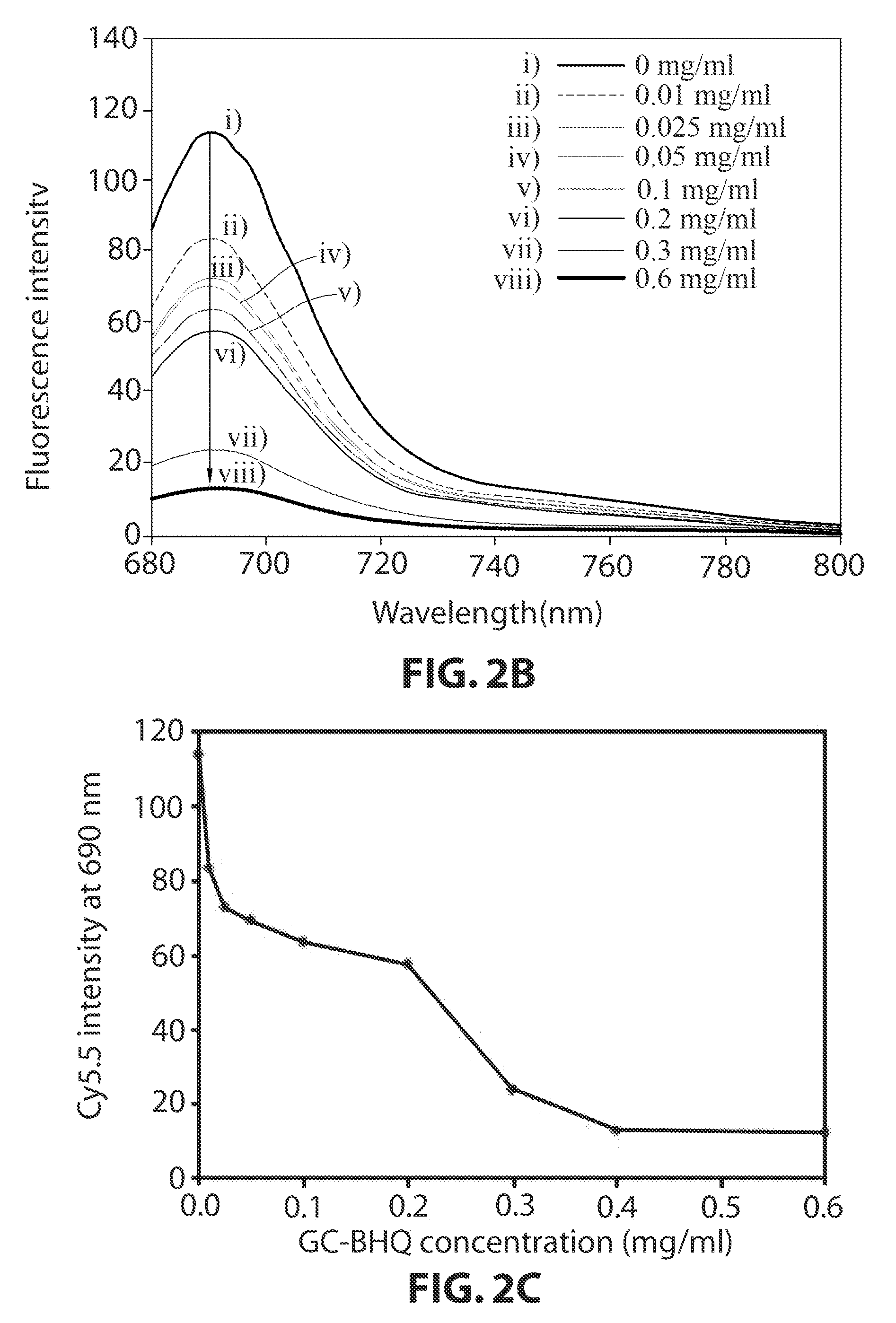Ionic complex nanoparticles for detecting heparanase activities and method for preparing the same
a technology heparanase activity, which is applied in the field of ionic complex nanoparticles for detecting heparanase activity, can solve the problems of difficult to detect the heparanase activity expressed in cells and in vivo, and to detect diseases early by using the sensor, and achieves strong fluorescence, prevent over-expression of heparanase, and high quenching
- Summary
- Abstract
- Description
- Claims
- Application Information
AI Technical Summary
Benefits of technology
Problems solved by technology
Method used
Image
Examples
preparation example 1
Method for Preparing Ionic-Complex Nanoparticles Sensor
1-1. Synthesis of Heparan Sulfate-Cy5.5 (HS-Cy5.5) and Glycolchitosan-BHQ3 (GC-BHQ3)
[0083]As one example of fluorophores-negative ion substrate polymers, HS-Cy5.5 was synthesized as shown in the following reaction formula 1.50 mg of heparan sulfate and 9 mg of Cy5.5-NHS were dissolved in 0.1M of NaHPO4 (5 ml, pH 9.0), and were reacted with each other at a room temperature for 6 hours in dark place. Next, the solution was dialyzed in distilled water for two days, and then was lyophilized. It was observed through UV that about 2 mol of Cy5.5 had bound to 1 mol of heparan sulfate.
[0084]As one example of positive ion biocompatible polymers-quenchers, glycol chitosan-BHQ3 was synthesized as shown in the following reaction formula 1. 100 mg of glycol chitosan and 11.5 mg of BHQ3-NHS were dissolved in 10 ml of DMSO, and then were reacted for 4 hours. Next, the reaction mixture was dialyzed in a co-solvent of water and methanol (1v:1v) ...
experimental example 1
Tests for the Ability of Heparanase Inhibitor to Inhibit Heparanase, by Using Ionic-Complex Nanoparticles of HS-Cy5.5 / GC-BHQ3
[0089]By using the ionic-complex nanoparticles of HS-Cy5.5 / GC-BHQ3 prepared in the preparation example 1, heparanase activities with or without heparanase inhibitor treatment were imaged.
[0090]The ionic-complex nanoparticles of HS-Cy5.5 / GC-BHQ3 prepared in the preparation example 1 were treacted with ‘heparanase’ and ‘heparanase+inhibitor’ at a temperature of 37□ for one hour, and then fluorescence emission therefrom by an enzyme degradation reaction was observed. After lapse of one hour, the fluorescence of the nanoparticles was observed by using a Kodak Image Station 4000MM Digital Imaging System mounted with a charge coupled device (CCD) camera. As a result, as shown in FIG. 3, the fluorescence intensity was increased when the heparanase was treated, whereas the fluorescence intensity was decreased when the ‘heparanase+inhibitor’ were treated. From the resu...
experimental example 2
Imaging of Heparanase Expression in Cancer Models Using Ionic-Complex Nanoparticles of HS-Cy5.5 / GC-BHQ3
[0091]To establish a cancer model, 1×106 SCC7 cancer cells were implanted in nude mice. Here, the SCC7 are epithelial cancer cells, and commercially available from American Type Culture Collection (ATCC). Next, when the cancer has a size of about 5-8 mm, the ionic-complex nanoparticles of HS-Cy5.5 / GC-BHQ3 were injected into veins of the mice tails. Then, heparanase expression was imaged by using an eXplore Optix image device.
[0092]It is known that the SCC7 cancer tissues express a large amount of heparanase. Accordingly, in order to test the ability of a heparanase inhibitor to inhibit heparanase, 20 mg / kg of heparin was injected into cancer tissues. After lapse of 20 minutes, the ionic-complex nanoparticles of HS-Cy5.5 / GC-BHQ3 were injected into veins of the mice tails. Then, decrease of heparanase activities was imaged by using the explore Optix image device.
[0093]As shown in FI...
PUM
| Property | Measurement | Unit |
|---|---|---|
| molecular weight | aaaaa | aaaaa |
| sizes | aaaaa | aaaaa |
| distance | aaaaa | aaaaa |
Abstract
Description
Claims
Application Information
 Login to View More
Login to View More - R&D
- Intellectual Property
- Life Sciences
- Materials
- Tech Scout
- Unparalleled Data Quality
- Higher Quality Content
- 60% Fewer Hallucinations
Browse by: Latest US Patents, China's latest patents, Technical Efficacy Thesaurus, Application Domain, Technology Topic, Popular Technical Reports.
© 2025 PatSnap. All rights reserved.Legal|Privacy policy|Modern Slavery Act Transparency Statement|Sitemap|About US| Contact US: help@patsnap.com



